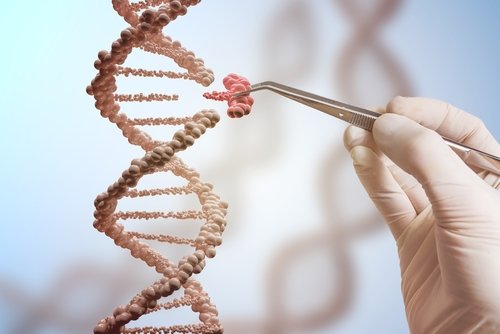Researchers Encouraged by Early Effectiveness, Safety Profile of Tricyclo-DNA in DMD Animal Study

Tricyclo-DNA (tcDNA), a class of therapeutics known as antisense oligonucleotides (AONs), has shown an important degree of effectiveness and a promising safety profile in a preclinical study with mice. The goal of the study is to test tcDNA’s potential use in treating Duchenne Muscular Dystrophy (DMD).
The study, “Efficacy and Safety Profile of Tricyclo-DNA Antisense Oligonucleotides in Duchenne Muscular Dystrophy Mouse Model,” was published in the journal Molecular Therapy – Nucleic Acids.
DMD develops due to mutations within the DMD gene, which codes for the protein dystrophin. Specifically, mutations associated with DMD occur within an area of the gene called the open reading frame (ORF). Genes include areas called exons that are translated into proteins as well as areas that are not translated, called introns. When DNA is transcribed into RNA, all of the exons come together, and this sequence is called the ORF. In other words, the ORF is the sequence of the gene that ends up being translated into a protein.
Patients with DMD have an absence of the functional dystrophin protein, while patients with another disease called Becker muscular dystrophy (BMD) have a smaller, but partly functional, dystrophin. The difference between these two diseases is that in DMD, the mutations are in the ORF, which causes the entire reading frame to be disordered, leading to a fully dysfunctional protein. Patients with BMD have mutations in the non-ORF part of the gene, which doesn’t entirely ruin the ORF. This leads to patients with BMD having less severe symptoms, slower disease progression, and less severe muscle wasting compared with their DMD counterparts.
While no effective therapeutics for treating this disease are currently available, a class of compounds called AONs have been shown to be promising. AONs work through a process called exon skipping. Exon skipping is a method that is used to cause cells to “skip” over faulty or misaligned sections of the genetic code. This leads to the formation of a smaller, but functional, dystrophin protein. While promising, AONs have not shown significant effectiveness yet in clinical trials. Despite those results, the U.S. Food and Drug Administration granted accelerated approval to Sarepta Therapeutics’ Exondys 51.
A new type of AON called tcDNA is unique and was found to have significant uptake into many cells after administration, which is an issue with other types of AONs. Researchers have shown that administering tcDNA to mice with muscular dystrophy resulted in functional correction and neurobehavioral improvement compared with other AONs. One of the important characteristics of tcDNA is that it has higher binding properties to RNA, which allows researchers to use less of this drug while still achieving an effect. This may reduce the toxicity observed by using AONs.
In order to determine the toxicology profile of tcDNA, researchers studied the therapeutic effects of treating mdx mice, a mouse model of DMD, with a short sequence of tcDNA.
First, researchers demonstrated the effectiveness of this short tcDNA, which restored expression of the dystrophin protein in skeletal muscles as well as in the brain. This was correlated with improvement in muscle function as well as emotional and cognitive behaviors that are normally associated with dystrophin deficiency.
Researchers then evaluated the toxicology profile of the drug. They treated mice with tcDNA for 12 weeks at a dose of 200 mg/kg/week and showed that although tcDNA was well-tolerated, there were significant signs of renal (kidney) toxicity. Renal toxicity is a known issue associated with the use of AONs. However, compared to other AONs, renal toxicity due to tcDNA is considered moderate and in the expected range for AONs.
Results from this study show that tcDNA is a promising therapeutic for treatment of DMD with considerable effectiveness and an acceptable pharmacological profile.
“However, the promise of tcDNA still crucially depends on how well it will be tolerated in humans and one should remain cautious until full reglementary toxicological studies are completed with the clinical candidate,” the authors concluded.






